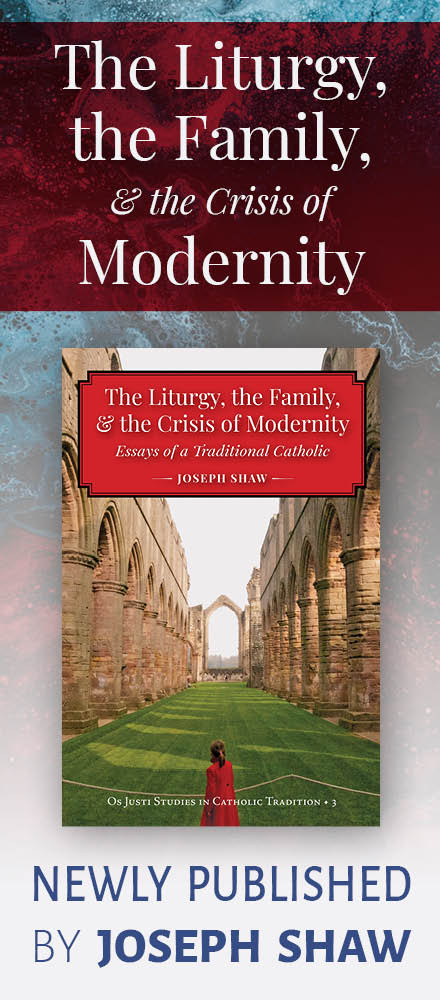A reader has sent in the following information on the upcoming events in honor of the 130th anniversary of the founding of the Pontifical Sanctuary of Our Lady of Mount Carmel in East Harlem, New York and the arrival in America to staff the shrine of the Society of the Catholic Apostolate, better known as the Pallottines.
On Sunday, July 13th at 5:00 p.m. there will be a Ukrainian Greek Rite Liturgy celebrated for a pilgrimage of Eastern Rite Catholics that day.
On Tuesday, July 15th, at 7:00 p.m., there will be sung at the main altar of the shrine church Vespers of the Little Office of the Blessed Virgin Mary (1962), followed by a candlelight procession at 9:00 p.m., and a Solemn High Traditional Latin Mass at midnight. Rev. Canon Jean Marie Moreau of the Institute of Christ the King will be subdeacon and homilist.
On the morning of July 16th, the feast of Our Lady of Mount Carmel, there will be a Traditional Latin Missa Cantata at 9 a.m., and at 10:00 a.m. a Mass in the Novus Ordo with Latin ordinary, followed by the Grand Procession with the Miraculous Image of Our Lady.
On Saturday July 19th, at 11 a.m., there will be celebrated a Solemn High Traditional Latin Mass at the altar of the Pontifically Crowned Madonna on the occasion of the third annual pilgrimage being made that day by faithful attached to the Extraordinary Form of the Latin Rite. The Rosary, Litany of Loreto, Investiture with the Brown Scapular and Solemn Benediction will follow at 2:30 p.m.
There have been several documented miracles that have been performed by the Blessed Mother at this shrine. The image located there was proclaimed miraculous by His Holiness Pope Leo XIII, and crowned during the pontificate of Pope St. Pius X on July 10th, 1904. There are only three images of the Blessed Virgin that have been crowned by Pontifical authority in North America. The Church of Our Lady of Mount Carmel at 115th Street is one of the first Italian National Parishes in the United States. At one time more than 500,000 people attended the feast of Our Lady of Mount Carmel during the month of July before and after the feast day. The crown of the Madonna and child is gold, adorned with precious stones, the emerald of which was donated by the Pope. The crowned statue is taken down in procession only on special occasions, this year's anniversary being one of those special occasions, and with the authorization of ecclesiastical authority. For more information on the Saturday, July 19th pilgrimage please contact: nyctlmpilgrimage@gmail.com.
On Sunday, July 13th at 5:00 p.m. there will be a Ukrainian Greek Rite Liturgy celebrated for a pilgrimage of Eastern Rite Catholics that day.
On Tuesday, July 15th, at 7:00 p.m., there will be sung at the main altar of the shrine church Vespers of the Little Office of the Blessed Virgin Mary (1962), followed by a candlelight procession at 9:00 p.m., and a Solemn High Traditional Latin Mass at midnight. Rev. Canon Jean Marie Moreau of the Institute of Christ the King will be subdeacon and homilist.
On the morning of July 16th, the feast of Our Lady of Mount Carmel, there will be a Traditional Latin Missa Cantata at 9 a.m., and at 10:00 a.m. a Mass in the Novus Ordo with Latin ordinary, followed by the Grand Procession with the Miraculous Image of Our Lady.
On Saturday July 19th, at 11 a.m., there will be celebrated a Solemn High Traditional Latin Mass at the altar of the Pontifically Crowned Madonna on the occasion of the third annual pilgrimage being made that day by faithful attached to the Extraordinary Form of the Latin Rite. The Rosary, Litany of Loreto, Investiture with the Brown Scapular and Solemn Benediction will follow at 2:30 p.m.
There have been several documented miracles that have been performed by the Blessed Mother at this shrine. The image located there was proclaimed miraculous by His Holiness Pope Leo XIII, and crowned during the pontificate of Pope St. Pius X on July 10th, 1904. There are only three images of the Blessed Virgin that have been crowned by Pontifical authority in North America. The Church of Our Lady of Mount Carmel at 115th Street is one of the first Italian National Parishes in the United States. At one time more than 500,000 people attended the feast of Our Lady of Mount Carmel during the month of July before and after the feast day. The crown of the Madonna and child is gold, adorned with precious stones, the emerald of which was donated by the Pope. The crowned statue is taken down in procession only on special occasions, this year's anniversary being one of those special occasions, and with the authorization of ecclesiastical authority. For more information on the Saturday, July 19th pilgrimage please contact: nyctlmpilgrimage@gmail.com.
 |
| A picture of the shrine sent in by a reader two years ago. |




















